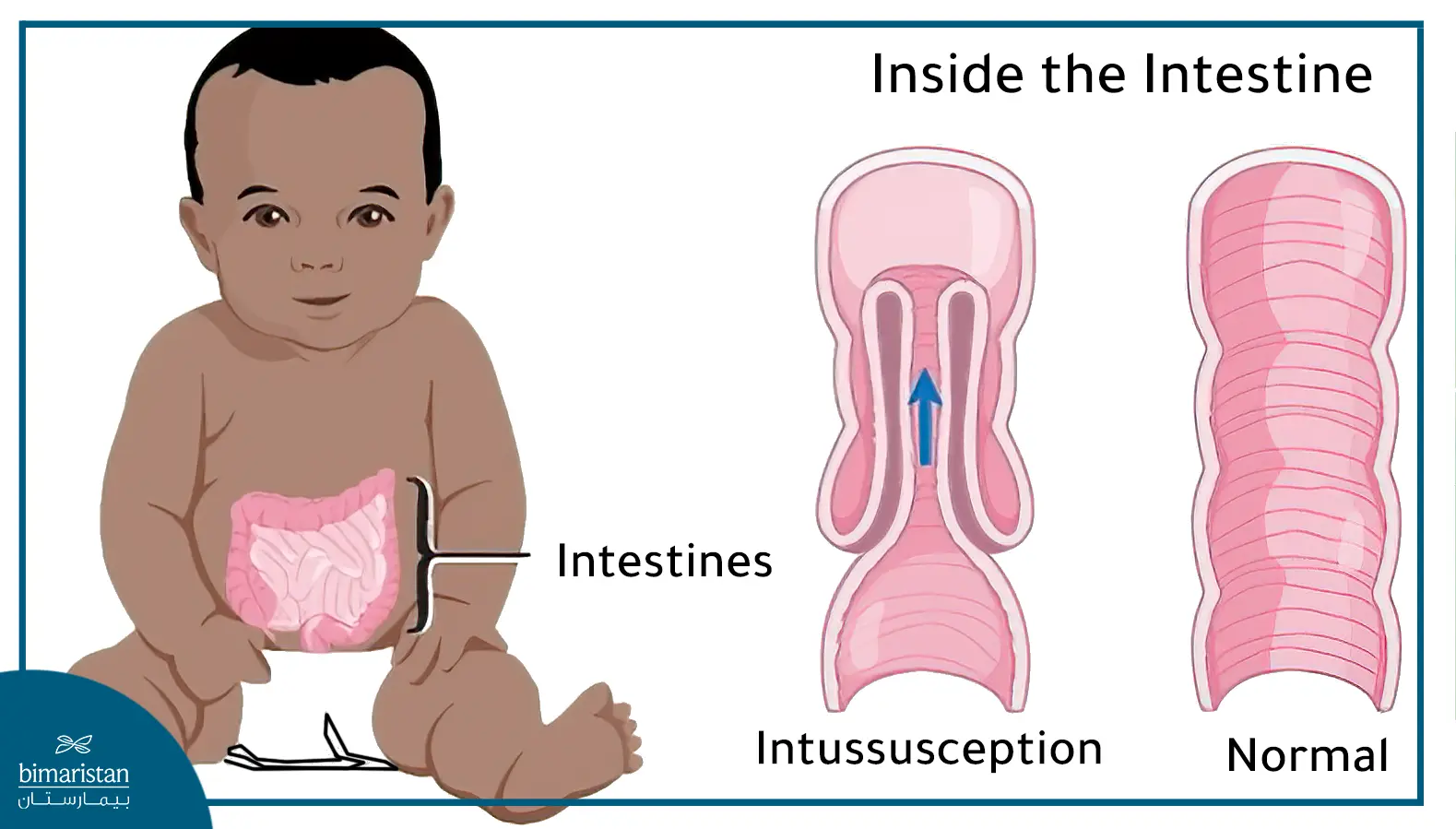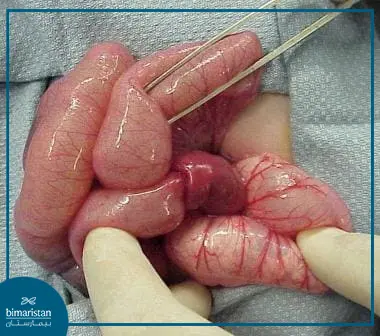Intussusception is a condition in infants where one part of the intestine slides inside another, causing blockages. Prompt treatment is essential.
Infant intussusception occurs in the small intestine, which processes food towards the rectum for nutrient absorption and elimination of residual waste. This condition leads to intestinal blockage accompanied by severe pain, prompting us to question how intestinal intussusception occurs in infants, what its causes are, and how intestinal obstruction is treated in children in Turkey.
Intestinal intussusception meaning
Contracting intestinal intussusception is generally prevalent among infants and young children aged 6 months to 3 years, with an incidence rate of approximately one case per 1000 children, according to statistical studies. Consequently, parents must be aware of the symptoms of intestinal intussusception to promptly seek medical attention for their child and manage this condition.
Firstly, we need to understand the term “intussusception”: it refers to the telescopic overlap of a segment of the intestine into the one following it, resulting in the compressed segment, causing its blockage.

Intestinal telescoping in infants typically occurs in the area of the ileocecal junction – the region where the small intestine connects with the large intestine (ileocecal intussusception). The small intestine telescopes into the large intestine, causing compression and resulting in intestinal blockage.
Intussusception of small intestine is one of the most common causes of intestinal obstruction in infants.
In some cases, this compression leads to the interruption of blood supply to the telescoped segment, causing it to necrotize. This can result in serious complications for the child’s life, and symptoms of toxicity may appear due to the deterioration of their health.
Causes of Intestinal Telescoping in Children
Up until now, the fundamental cause of intestinal intussusception in newborns has not been determined, but males are more commonly affected than females.
In any case, the most significant contributing factor to infantile intestinal intussusception is respiratory or digestive infections preceding this telescoping. It is common for the child to have a cold before experiencing intestinal intussusception.
This can be explained by these infections causing swelling in the defensive tissues located in the intestinal wall, leading to variations in wall thickness. When the intestinal wall moves to propel food toward the colon, a thin segment may telescope into the thicker segment following it, resulting in intestinal intussusception.
Lymphomas or certain tumors may also lead to intestinal intussusception in older age groups through the same mechanism. In such cases, broader investigations must be conducted to identify the cause and administer immediate treatment.
Intussusception Symptoms in Children
Intestinal intussusception leads to the emergence of symptoms of intestinal obstruction in infants. The intussusception in infants symptoms include:
- Sudden, severe bouts of crying due to intense abdominal pain that may subside and recur.
- Abdominal bloating and constipation due to intestinal obstruction.
- The infant may experience nausea and frequent vomiting, with the vomit color being green or yellow.
- Loss of appetite and refusal to eat.
- Intestinal intussusception in infants can result in cherry-red, jelly-like blood in the stool (intussusception jelly stool).
- Some children may experience general weakness and an increase in body temperature. If your child exhibits similar symptoms, it is crucial to consult a doctor promptly for a diagnosis and appropriate treatment.


The surgeon then ensures the vitality of the affected segment. If the telescoped portion has not been harmed due to impaired blood supply, the surgery concludes here. The surgeon closes the incisions, and the child improves immediately after the surgical procedure.
However, if the segment is compromised, it necessitates its removal and reconnection of the intestines, extending the infant’s recovery period slightly. Nevertheless, the child will improve and eventually return to normal bowel movements.
In conclusion, intestinal intussusception is a common condition in infants that requires swift intervention. Any delay in receiving treatment can lead to serious complications such as bowel perforation and necrosis of the telescoped intestine. If a child experiences vomiting, abdominal bloating, and constipation, it is essential to seek immediate medical attention to preserve the infant’s health and treat intestinal intussusception.
Frequently Asked Questions About Intestinal Intussusception
What is intestinal intussusception disease?
Intestinal intussusception is a medical condition in which one segment of the intestine telescopes into the segment that follows, causing compression of the telescoped portion and intestinal obstruction. It primarily affects male children between the ages of 6 months and 3 years.
Is intestinal intussusception a serious condition?
Yes, intestinal intussusception is a critical emergency that requires promptly restoring the telescoped segment to prevent interruption of its blood supply and subsequent tissue necrosis. Therefore, if a child experiences symptoms of intestinal obstruction and abdominal pain, it is crucial to seek immediate medical attention at the nearest hospital.
What are the symptoms of intestinal intussusception?
Infants with intestinal intussusception typically start crying intensely, lifting their legs, and rubbing them together due to severe abdominal pain. The crying may subside temporarily, only to return. Other possible symptoms include:
- Vomiting and refusal to eat
- Constipation
- Abdominal bloating in later stages
- Passage of small amounts of bloody stool
Can intestinal intussusception recur?
Yes, intussusception recurs in some patients, and its recurrence requires further investigations to find out the reason for the recurrence of intussusception and treat it so that it does not occur again.
Sources:
- Thieme Group
- ResearchGate
- Clinical and Experimental Pediatrics

